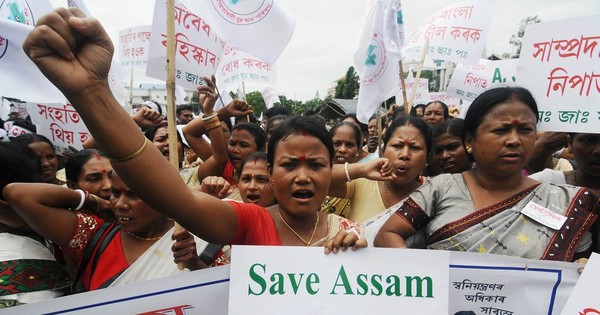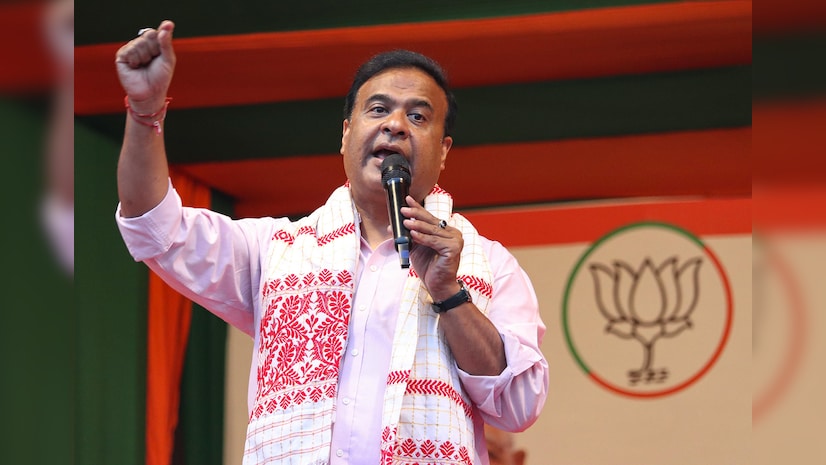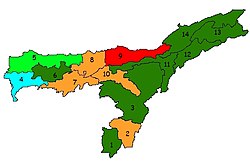Title: Assam’s Current Political Landscape in 2025: Continuity, Challenges, and Change
Introduction
As Assam moves through 2025, the state stands at a crucial political juncture. While the Bharatiya Janata Party (BJP) continues its dominance in both the state and national landscape, local political dynamics are shifting subtly, influenced by ethnic identity, youth aspirations, regional economic concerns, and the after-effects of policies like CAA and NRC. Here’s an overview of the current political scenario in Assam, including major players, emerging issues, and public sentiment.
Since taking power in 2016, the BJP-led government in Assam has steadily increased its influence. Chief Minister Himanta Biswa Sarma, a key strategist and powerful face of BJP in the Northeast, continues to lead the administration with a mix of welfare policies and a strong law-and-order image.
1.BJP’s Stronghold and Governance
Key highlights of the BJP’s current tenure:
Focus on infrastructure development, including roadways and digital connectivity.

- Expansion of welfare schemes such as Orunodoi and Assam Ayushman Bharat.
- A firm stance on illegal migration, pushing ahead with NRC updates and border fencing.
Despite these, the BJP faces criticism on issues like:
- Rising unemployment among youth.
- Concerns about freedom of expression and press.
- Allegations of communal polarization in certain districts.
2. Congress Struggles for Revival
The Indian National Congress, once the dominant party in Assam, continues to struggle for a comeback. Although they’ve retained some pockets of influence in Upper Assam and Barak Valley, a clear leadership vacuum and internal factionalism remain major hurdles.
The Congress is trying to:
- Reconnect with tribal and tea garden communities.
- Address economic grievances and present a softer, secular alternative.
- Collaborate with regional parties to form a united opposition.
However, without a fresh narrative and youth leadership, their revival remains uncertain.
3. Rise of Regional Forces and Ethnic Identity Politics
2025 has also seen renewed attention on regional parties and ethnic organizations, particularly:

Asom Jatiya Parishad (AJP), which appeals to the Assamese identity and language preservation.
- Raijor Dal, formed after the anti-CAA protests, led by activist Akhil Gogoi, continues to challenge the establishment through grassroots campaigns.
- Bodoland region politics have remained fluid, with changing alliances between BPF, UPPL, and BJP.
These parties focus heavily on:
Opposing the Citizenship Amendment Act (CAA).
Demanding more autonomy and preservation of tribal land rights.
Protecting language and culture from perceived external threats.
4. Youth and Social Media’s Political Power
Assam’s youth, increasingly educated and digitally active, are now a potent political force. Platforms like Instagram, Facebook, and YouTube have become arenas for political discourse and satire.
Popular concerns among youth include:

Lack of job opportunities.
- Environmental degradation, especially related to oil fields and flood mismanagement.
- Representation of indigenous cultures and voices in policy-making.
Digital activism, especially during protests (like anti-CAA), has shown that youth-driven movements can sway public opinion even in a politically charged environment.
5. What Lies Ahead?
As Assam approaches the 2026 state elections, political parties are already in campaign mode. Key issues expected to dominate the debate:
Employment generation and industrial development.
Implementation and effects of CAA.
Handling of floods and erosion, especially in rural areas.
- Employment generation and industrial development.
- Rights of indigenous communities versus rapid urbanization.
While BJP remains strong, opposition parties have the opportunity to realign and offer a viable alternative if they can address grassroots issues with sincerity and unity.
Conclusion
Assam’s politics in 2025 is a blend of tradition and transition. While national parties continue to dominate the scene, regional voices are growing louder. Voters, especially the youth, are more aware and vocal than ever. As the state walks this political tightrope, the demand for inclusive governance, cultural respect, and economic growth will shape the future.

What are your views on Assam’s current political direction? Let us know in the comments or share your thoughts with us on our social handles. Stay connected with “India Through Assam” for more grassroots stories and updates.
